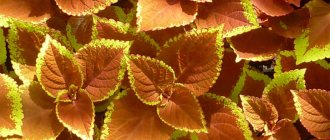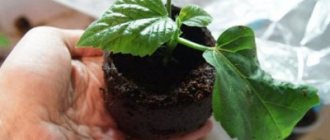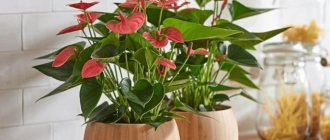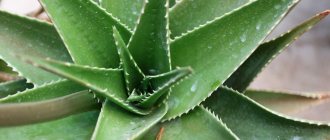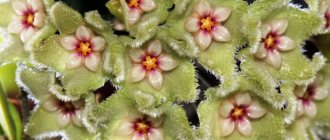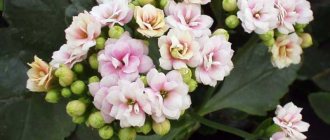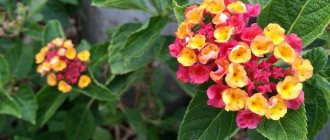Camellia home or garden is a very beautiful flower. Caring for and growing this plant is not difficult if you follow the instructions and do not forget to water the flower on time.
Camellia is an evergreen plant that belongs to the Saxifraga family. Roses, which are considered to be native to Africa and Australia, have become ubiquitous due to their ability to change color when exposed to light. Over time, having arrived on the Japanese islands, these plants took a strong place in gardens and parks, where, slowly adapting to new conditions, they began to bloom with bright and large flowers. Gradually spreading, they took root in Japanese homes.
Representatives of this genus bloom for 3-5 months, and in their homeland - more than a year and a half. Camellia reproduces, as a rule, by shoots (buds). There are also vines that are either planted or grown, or are tree trunks wrapped around a support.
Camellias were brought to our country in the 20s of the last century, but the plant gained real popularity after people became acquainted with its amazing flowers. Red, pink, white, soft green and even black camellia color - all this is an iridescent splendor of various shades.
Varieties of Japanese camellia with photos
By all accounts, the Camellia Japonica arrived in London on an East India Company ship. Tea was brought to Europe on East India Company ships from China. Officials tried to bring tea plants to England for propagation, but either by mistake or on purpose, the Chinese sent the seeds of the Camellia japonica plant instead.
By far the most important ornamental Camellia is believed to come from Japan - hence the name. The tree grows up to 30 centimeters in height. In the wild it grows as undergrowth on hillsides.
The flowers vary in size and color, usually having five to six petals and being red. They bloom in winter and have beautiful shiny evergreen leaves and an interesting brown trunk.
Today camellias are grown as ornamental plants for their gardens. There are about 3,000 varieties and hybrids. Camellia japonica is the most common species in cultivation, with over 2,000 named cultivars.
This is followed by Camellia reticulata with more than 400 varieties and Camellia Sasanqua (eugenolic) with more than 300 varieties.
Interesting! Some varieties can grow to considerable size, although there are also more compact hybrids.
Thanks to the work of breeders, flower lovers have access to various variations of japonica.
- Double white
Refers to double varieties with a perfectly white color and almost perfect radial symmetry. The flowers of the variety are large, spherical, with a light terry edging along the very edge of the petal.
The leaf blades are slightly elongated, with a glossy sheen on both sides of the leaf.
- Giulio Nucci
The color of the petals is a beautiful crimson color, and their shape is significantly different. The petals forming the outer circle are larger and more elongated than the inner ones.
The petals located in the inner part of the inflorescence are smaller and thinner, which is why they often curl like curls and are arranged very densely. In the center are bright yellow stamens.
- Lavinia maggi
An interesting variety with large corollas, painted pale pink with crimson veins. But there are specimens with completely pink inflorescences.
- Princess Baciocchi
The inflorescences are crimson in color, slightly double, with light white stripes. The petals are round, slightly pointed. It begins to bloom in February, the end of flowering occurs in May.
- Margaret Davis
Terry variety, painted in two colors. The outer edge of the petals is pink or red, the width of the border reaches 4 mm. Inflorescence petals:
- the lower ones are large, round, arranged in several rows;
- the upper ones are much smaller and thinner than the outer ones, they are located very densely, their color is usually creamy white, uniform.
- Brushfield's yellow
The flowers of this camellia are beautiful cream-colored, double, with bright light yellow petals in the center.
- Lady Campbell
The inflorescences look like peony corollas, only double. They are painted pure red, but sometimes a thin white stripe is visible in the central part of the petal.
- Linda Rosazza
The variety was bred by Italian breeders relatively recently - in the second half of the twentieth century. The inflorescences are large, about 10 cm, with ideal radial symmetry of the petals.
The color is snow-white. There may be a thin terry border along the edge of the petals.
- Pink perfection
Camellia lovers place this variety on the podium, and for good reason. It is rightfully considered one of the most beautiful among camellias.
The color of the petals is soft pink, they are all the same size, their edges are slightly bent towards the inside of the flower. Flowers have high decorative qualities.
- Dazaire
Its inflorescences are very similar to rose flowers, but larger (diameter can reach up to 12 cm). Belongs to semi-double varieties. The petals are painted in two colors: the inner part is white and the outer part is pink. The color change is very smooth.
- Ashani
It is distinguished by a small number of equally sized smooth petals. In the center of the inflorescence there are yellow stamens arranged in a circle.
- Vittorio Emanuel
Semi-double petals are formed into an inflorescence of original outlines: its petals are curved in the opposite direction. Its color is also interesting: the main color is white, but due to the intense pink spots and stripes a unique pattern appears.
- Lady Vansittar
Low-double variety with double color (pink and red). Moreover, each color has its own place on the petal. The petals are equal in size and of the same shape.
- Tricolor
The inflorescence size is medium (does not exceed 8 cm), the color is predominantly white with different-sized stripes of red and pink colors. Yellow stamens are located in the center.
- Chanders Red
Japanese red camellia has a flower size of about 10 cm. The petals are the same size with a pointed tip and the same shape. The corolla is deep red.
- Camellia japonica "Blood of China"
Peony-shaped inflorescences of a beautiful red hue, slightly double. The stamens located in the center are golden yellow.
- Camellia domestica
At home, a Japanese camellia bush is always more compact than one grown in a garden or greenhouse.
Thanks to the work of breeders, there are many color and size options. Homemade camellia blooms differently depending on the varietal characteristics, but more often the appearance of flower stalks occurs in the winter.
- Camellia arborescens
Features of this variety:
- refers to winter-hardy species;
- capricious in care.
Features of planting a flower:
- planting only in spring;
- when planting in March-April, fertilize;
- the first four years it is possible to grow flowers in pots;
- from 4 years old the plant can be transplanted into the ground;
- preferred landing site: shade;
- there should be no through wind at the landing site;
- the landing site can be fenced with a hedge or wall;
- a mixture with soil for rhododendron is used as soil, which corresponds to acidic and moderately moist soil;
- Plants should not be planted deep.
Features of care:
- little fertilizer is required, since the active growth period is April-June;
- there should be no lime impurities in the water being watered;
- When watering, water should not fall on the flowers;
- in the warm season, watering should be regular, in winter - a reduced version;
- fertilizing is carried out in the spring;
- Mineral fertilizers and organic matter are used for feeding;
- young specimens are transplanted into pots annually.
Camellia arborescens is one of the popular varieties
- Camellia climbing garden
Growing this variety is not difficult, and care includes a standard set of measures:
- regular watering, especially during the flowering and climbing period;
- in dry climates, spraying of leaves is required;
- In spring, complex fertilizers are required;
- transplantation is carried out every two to three years;
- To stimulate growth, shoots are pinched.
Camellia climber is a very beautiful plant
- Camellia standard
Features of caring for this variety:
- frequent but moderate watering;
- regular feeding;
- pruning;
- replanting bushes as they grow;
- periodically spraying the leaves with water.
Varied Charm
You can plant the following species in your garden plot (each species offers attractive and varied varieties):
- Japanese Camellia - with dark green leaves and single large flowers, its varieties vary in the degree of terry, color and size of flowers;
- oilseed - an evergreen tree up to 10 m in height, blooms from September to October;
- mountain (or Miyagi) - a bush no higher than 5 meters, with simple flowers about 5 cm in diameter, blooming profusely from November to January.
Magnificent Mushio Grand.
Another plant is Balsam , and one of its varieties also bears the name Camellia. They are similar to garden Camellia in flower color and lush flowering, but these are two different plants.
Flowers with variegated colors.
In our climate, Camellia is often grown in tubs - it is brought indoors in winter, protecting it from frost.
Container growing allows you to more flexibly regulate soil composition and lighting conditions.
Trimming and pinching camellias when caring for flowers
Pruning is an integral part of caring for a camellia flower growing in a room. In addition to the sanitary removal of weakened, damaged and dried shoots, the crown must be formed, otherwise the bush loses its compactness, grows and becomes unsuitable for keeping in the house.
The formation of the camellia crown is done during the period when mass flowering is declining and the plant does not form new buds. Depending on the type of indoor flower, camellias are cut down to half the length of the shoots. Places of large cuts are treated with garden varnish.
Experienced flower growers, using pruning and shaping, obtain elegant standard trees or miniature bonsais from camellias. Pruning and pinching help stimulate branching, so you can expect that after such care the camellia will bloom much brighter and more abundantly.
But at the stage of bud formation, the gardener should evaluate the strength of the plant and adjust the number of future flowers on the shoots. If there are too many buds, they will weaken the camellia, and the bush will still not be able to hold the large corollas that have opened for long.
Short description
Growing camellia sinensis in the garden is problematic, since the plants require an average annual temperature of 15-25 degrees. That is why many lovers of exotic plants plant a tea bush in the apartment.
The flower growing in the room does not have many leaves to drink delicious and healthy tea every day. The height of the bush is slightly more than 60 cm. The plant attracts with its glossy green leaves, reaching a length of 5-10 cm. The leaves are lanceolate or elliptical and sit on small petioles.
Camellia, flower care at home
Camellia is a flower with character; caring for it at home is not so complicated, but you still have to observe some nuances to ensure comfort for the plant.
Choosing a location, lighting
Camellia is light-loving, but at the same time afraid of direct sunlight. She needs abundant but diffused light. The flower will feel good on south-east and south-west windows.
The ideal location for Japanese camellia is a winter garden with diffused light. If there is none, an insulated loggia or the brightest room is quite suitable.
The desired length of daylight for this beauty is 12-14 hours. If in winter there is not enough natural light, the tree needs to create artificial lighting.
To form an even, lush crown, the bush is constantly rotated so that all its sides receive light evenly. But when the camellia blooms, you shouldn’t turn it around.
When growing a bush in open ground, you need to make sure that it is not exposed to the scorching rays of the sun for a long time. To protect the flower, create screens or canopies.
Air temperature
In summer, it is very advisable to take the camellia out to the balcony or garden, in a windless place, sheltered from the active sun. During flowering, the beauty does not like to be moved from place to place or to turn the pot. The plant also does not tolerate temperature changes and drafts.
Camellia japonica thrives in moderate temperatures in spring and summer. At the end of autumn, it is necessary to place the plant in a room with a temperature of +5 to 6 °C - at this time it lays flower buds.
After the first “roses” appear, the camellia should be moved to a warmer room with a temperature no higher than +12 °C. It is these conditions that provide the plant with abundant and long-lasting flowering.
Humidity
At home, the camellia flower will most likely suffer from a lack of humidity in the air. The plant loves high humidity, it is recommended to spray it in the summer, and for the rest of the period it is worth keeping trays of water next to the pot.
You cannot spray the bush during the flowering period. With a lack of moisture in the surrounding atmosphere, the leaves begin to turn yellow, wither, and become drooping.
Watering
Watering regime is the most difficult moment in caring for camellias. In summer, the soil requires abundant irrigation, but between waterings it should be allowed to dry out by about 50-60%.
In winter, the substrate must dry out almost completely between waterings, otherwise the soil will become acidic. The shrub is very sensitive to both underwatering and overwatering, so at first you will have to carefully monitor the condition of the soil and flower in order to develop an optimal irrigation regime.
It is impossible to give exact recommendations here, since everything depends on the microclimate in which the camellia is contained. The main thing is to prevent stagnation of water and drying out of the soil.
Water for irrigation should be settled, or better filtered. The plant does not tolerate excess calcium, so the water should be softened with citric or acetic acid.
Fertilizer
It is necessary to feed the flower, as it spends a lot of resources on abundant flowering. Camellias are suitable for complex mineral fertilizers for flowering domestic crops.
During the period of formation of new shoots (from March to August), the plant is fed 2 times a month. When the buds begin to form, you can reduce the fertilizer to 1 time every 25-30 days.
Transplantation and soil for camellia
When it comes to indoor care, camellias grow best in fertile, acidic, moist, well-drained soils with a high content of organic matter.
In alkaline soil, plants do not thrive and may suffer from iron deficiency. If the soil is sandy, add equal parts oak leaf mold or coarse peat and fine pine bark to the pot. Camellias do not cope well with large amounts of fertilizer, so do not overuse them.
Of the ready-made substrates sold in stores, special soil for azaleas, camellias, or rhododendrons is suitable.
The substrate is prepared independently from the following mixture:
- 1 part leaf soil;
- 1 part of coniferous land;
- 1 part peat;
- 0.5 parts sand.
Pots for camellias are chosen large, wide, preferably clay.
Until the bush reaches 5 years of age, it is replanted every year in the spring. Afterwards, you can do a transplant every 2-4 years. It is better to replant using the transshipment method, so as not to injure the roots.
Features of care during the rest period
Proper care during the dormant period consists of creating favorable temperature conditions. In winter, the plant needs cold; it may die in an apartment. Therefore, in winter, the plant is kept on a glazed balcony at a temperature of +10 +15 °C.
Preparing for winter
During the cold winter months, when the ground freezes, the roots cannot absorb water from the soil. Thus, desiccation is the main cause of winter damage and death of camellias. With this in mind, the placement of camellias in the landscape will have a significant impact on winter survival. Protection from winter sun and wind is critical
This can be achieved by planting camellias on the north side of a building or home. An established tree line or large evergreen conifers can also be used as a moderate form of winter protection. The north side of the structure will have the most shade during the winter months.
Winter camellia requires care. Only careful care and concern for the plant during all periods of its growth (flowering and dormancy) can ensure the health of the camellia and the beauty of the flowers. Camellia is the empress among blooming flowers. You can grow it both at home and in the garden. The rules of care are the same, taking into account some features. Camellia is a “capricious” plant, so learning how to care for a flower is crucial.
Features of care during the flowering period
Among the features of caring for a flower during its flowering process, the following requirements should be taken into account:
- replanting during flowering is allowed;
- requires subcortex and watering;
- maintaining temperature +20 +25 °C;
- high air humidity is required;
- You can spray only the leaves;
- moisture on flowers is prohibited;
- pruning the shoots so that 3-4 flowers remain on the branch.
Main cultivation problems
To preserve the decorative appearance of the plant and avoid problems when growing indoor camellias, experienced gardeners recommend that when forming a large number of buds on one plant, leaving only a couple of the strongest flowers on each shoot. During the process of bud formation, it is necessary to especially carefully monitor all irrigation measures.
When the soil is dry, exposed to cold drafts or insufficient lighting, the ornamental crop drops its flowers. As a result of overwatering, the pores of the root system are blocked by moisture, and the functioning of the roots occurs, as a result of which the plant lacks nutrition, and the indoor flower withers and sheds its foliage.
In addition, improper care often causes chlorosis, and also weakens the plant and makes it susceptible to disease or pests. To treat indoor camellia, modern and highly effective drugs “Aktara”, “Aktellik”, “Fufanon”, “Fitoverm” or analogues are used.
How to propagate Camellia
Since camellia is a perennial shrub, its reproduction is possible. There are two options: cuttings and seeds. Each method has its own advantages and disadvantages.
Propagation by cuttings
For propagation of the camellia variety, the vegetative method of cuttings is more suitable. You can choose shoots of the current year with two or three internodes with developed buds.
The size of the cuttings is individual, varies from 3 to 12 cm and depends on the varieties of camellia. An oblique cut is made from the bottom of the stem under the depression; the bottom leaf should also be cut off.
To increase the likelihood of rooting, the cuttings are placed in a stimulant solution (for example, Kornevin) for 5-7 hours and planted in clean river sand, screened with glass or film. An important condition for rooting is maintaining a constant temperature from 23 to 27 °C. Propagation of camellia by cuttings is very common.
Important! Rooting takes quite a long time - one and a half to two months.
Growing from seeds
Camellia can also be propagated from fresh seeds. Typical germination rate is 80-90%. Seeds are not stored for long as they quickly lose their ability to germinate. Camellia seeds are ordered from catalogs of well-known companies.
The ideal soil for planting is a mixture of river sand and peat in equal proportions. To speed up seed germination, the air in the room where the seedlings are grown is heated to + 22 °C. Seedlings and their rooting occur throughout the year.
Important! The resulting young seedlings are characterized by a low level of resistance to adverse influences, but with quality care they develop intensively, increasing the degree of winter hardiness.
To make the cutting take root faster, you can treat it with Heteroauxin, then plant it in a damp, loose mixture of sand and peat.
The shoot will give roots in 2-3 months, after which it can be transplanted into a full-fledged substrate. All this time the cutting should be kept warm (+22-25 ºC).
It is more difficult to germinate seeds: they are first soaked in water to swell, then kept for an hour or two in a weak solution of manganese. Afterwards, they are sown in a mixture of peat and sand, to a depth of about 1.5 cm.
The container with the seeds should be covered with film and stored in a warm place. The substrate with seedlings requires regular irrigation: the seeds should be watered with a spray bottle so as not to wash away the top layer of soil.
In about a month and a half, the first shoots should appear. When a pair of leaves form on the shoots, they can be planted in pots.
Sowing seeds
To germinate seeds you can use:
- substrate for azaleas or camellias;
- heather compost;
- vermiculite;
- a mixture of perlite and sphagnum moss;
- a mixture of peat and river sand.
Fill small pots with a diameter of 7-9 cm with soil mixture and water it. Place the prepared seeds in containers, with the eye located at the bottom or side. There is no need to deepen it too much, just press it lightly into the ground and sprinkle the seed a little on top with the substrate. Cover the top of the pot with film and place it on a partially darkened windowsill in a room with a temperature of at least 22 degrees Celsius.
How to grow a lush camellia bush at home
Many novice flower growers do not know how to properly care for home camellias and make mistakes that can lead to the death of the flower. However, in order for the plant to live long and bloom well, you need to follow just a few simple tips.
The amount of watering depends on the air temperature - the hotter it is, the more water the flower needs. Each time between moistenings, the upper part of the earthen clod, 1–2 cm deep, should have time to dry completely.
However, you should not allow the soil to dry out completely, as this will harm the plant and it will begin to shed its leaves. Overmoistening is also extremely undesirable - in this case, the substrate will turn sour and the flowers will fall off and the leaves will become covered with brown spots.
It is recommended to water with water at room temperature.
The water should be free of lime. In July - August, watering is reduced. In winter, watering is moderate.
When growing and caring for a camellia bush, it is important to provide it with a sufficient level of humidity, since it survives dry conditions extremely hard. To do this, you need to regularly spray the flower.
It is best to do this at low light intensity, otherwise burns may appear on the leaves. For this purpose, settled water at room temperature is used.
If the camellia is blooming, it is important to ensure that during spraying droplets of water do not fall on the flowers, as this will lead to their rapid withering. You can also increase the air humidity around the plant by placing the pot on a tray with wet pebbles.
Caring for camellia flowers both at home and in the garden involves regular feeding in order to provide the plant with all the necessary nutrients. With the beginning of growth, mineral fertilizers without lime are applied. They need to be diluted at the rate of 1 gram of fertilizer per 1 liter of water. When the buds appear, feeding should be stopped.
In order to grow a lush camellia bush at home, it, like all indoor plants, must be replanted periodically. Considering that with the arrival of spring, most camellia varieties are still in full bloom, replanting is usually carried out at the beginning of winter.
This must be done every 2 - 3 years for adult plants and every year for young ones. You need to choose a pot a few centimeters larger than the previous one. The root system of this plant is very fragile and can be easily damaged during transplantation.
Therefore, they do not completely get rid of the old earthen coma, since after this the flower will hurt for a very long time. The best option would be to get rid of only a small part of the old soil and simply transfer the plant to a new pot.
It is necessary to put a thick layer of drainage at the bottom, which will not allow excess moisture to stagnate in the soil.
Expanded clay or broken bricks are used for this. After transshipment, the empty space remaining between the walls and the old earthen lump is filled with fresh substrate. The root collar of the plant must be placed on the surface of the soil. Care after planting a camellia is slightly different from usual - at first you need to water the plant quite rarely and very carefully.
Theoretically, this plant does not need pruning, but this procedure can be carried out to make the flower decorative. If you want to get a profusely flowering bush with a large crown, you can cut off the shoots a little, which will then branch much better. This procedure must be carried out after the camellia blooms.
If there are too many flowers on the bush, the plant may get sick, since it takes a lot of effort to form them. In this case, it is better to cut off the excess buds, leaving about 3 flowers on one shoot.
If the pot is constantly moved, the plant may drop its buds.
Seed selection and preparation
Experienced flower growers who practice growing camellias at home recommend purchasing seeds in specialized stores, or even better, directly in the greenhouses of botanical gardens.
Only mature seeds that are dark brown in color are suitable for sowing. White color indicates immaturity.
Purchased fresh seeds must be stored in an airtight container in the refrigerator until the time of sowing to prevent them from drying out. Dry seeds from bags must be soaked overnight in water; this procedure is not required for fresh seeds. In addition, immediately before sowing, the integrity of the shell of dry seeds should be disrupted so that they germinate faster (for example, carefully file or puncture).
How to replant garden camellia after purchase in open ground
After purchasing a flower in a pot, it is necessary to transplant it into open ground. Planting and caring for camellias in open ground takes into account a number of requirements.
What is needed for planting
How to plant camellia correctly? Camellia is a lover of acidic soils. Fertile and permeable soils are especially suitable for planting this shrub. When planting, it is important to remember that camellias do not like to be planted too deep. They are planted so that their root collar is flush with the ground.
The various species of camellia plants are generally well adapted to acidic soils rich in humus, most species do not grow well in calcareous soil or other calcium-rich soils.
The soil must be chosen so that the pH is between 6 and 6.5.
A necessary condition for the good development of plants is mulching with humus leaves, grass, crushed bark or wood chips, that is, everything that ensures the preservation of acidity and soil moisture at the roots.
Important! When mulching, it is necessary to leave the root collar open, otherwise the camellia may rot.
Choosing the optimal location
Camellias have a reputation for being demanding and picky plants, but a lot depends on how you plant them. The bush should be planted in a shady place, not in direct sun. The following rules for choosing a location should be taken into account:
- shady place;
- Avoid exposure to direct sunlight;
- eliminate the possibility of drafts;
- can be planted near a wall or hedge;
- light should reach the flower through the lace of branches, so planting between trees is possible;
- you cannot choose a place with stagnant water to prevent rotting of the roots;
- you can choose the eastern or western walls of the garden plot fencing;
- When planting, the plant should be positioned slightly higher than the surrounding soil. This allows excess water to drain away from the center of the plant;
- This shrub should not be planted where it will have competition for nutrients.
Step by step planting process
Planting Tips:
- the planting hole should be as deep as the root ball and twice as wide;
- you should center the plant and fill the hole, tilting the soil on the sides;
- the top of the root should be 2-4 cm above the soil level;
- You shouldn't cover the top of the root ball, but you should mulch around the plant.
Step-by-step instructions for planting:
- A planting hole should be dug in the prepared bed.
- The volume of the pit should be twice the volume of the earthen ball with the roots of the plant.
- Place drainage made of expanded clay or fine gravel 20 cm thick on the bottom.
- A pile of earth is poured according to the required composition.
- The seedling is placed on top.
- The roots are straightened and covered with earth.
- The root collar should not be covered.
- The soil around the trunk is compacted.
- Watering is carried out.
After planting, the soil must be mulched on top with peat.
Technology for growing camellia from seeds
Seed propagation of indoor camellia allows you to obtain an adult and profusely flowering plant only five to seven years after sowing. The seeds ripen approximately in the middle of the autumn period, after which they are collected and sown. Shoots appear in partial darkness. The nutrient mixture should be peat and sand. Despite the fact that propagation by seeds is more difficult, this method allows you to grow the strongest and healthiest seedlings.
Diseases and pests, preventive measures
Camellia is rarely affected by diseases and pests. But nevertheless, errors in care can sometimes lead to undesirable consequences, the rules for eliminating which you need to know.
Camellia plants are susceptible to several pests, including aphids, mealybugs and scale, which can be controlled with insecticidal soap or systemic insecticides.
Uneven watering can cause camellia buds to drop before they open, while soil that is not acidic enough can cause the leaves to turn yellow.
| Disease/pest | Signs of appearance | Control measures |
| Chlorosis | The leaves acquired a light color and green veins became noticeable. |
|
| Oidium | Gray spots appear on the plant. | An excellent remedy for combating oidium is Colloidal sulfur (30 g per 10 l); a 2% solution of DNOC is also used. |
| Yellow spot | Yellow spots of irregular shape appear on some leaves and shoots. This is caused by genetics or a virus. |
|
| Cucumber mosaic virus | The leaf veins turn yellow. |
|
| Phyllosticosis | Brown spots of irregular shape appear on the leaves. |
|
| Scale insects and false scale insects | White tubercles appear on the stems and leaves, looking like a dense coating. | If the pest is small. it is removed with a toothbrush, after which the plant is smeared with a swab soaked in kerosene. But if the problem has managed to grow, use a soap solution (15 g of liquid soap, 10 ml of denatured alcohol per 1 liter of warm water), Actellik il Fosbecid (20 ml per 10 l). |
| Thrips | The leaves in some places are unevenly colored yellow-white. When severely damaged, they turn yellow and fall off. | Repeated treatment with Aktara, Actellik, Fufanon (10 ml per 10 l), Fitoverm (2 ml per 1 l) and Iskra (1 tablet per 10 l) is used. |
| Spider mite | At first the leaves are covered with small white specks, and then become discolored. Sometimes you can see a thin web between them and the mites themselves on the underside of the leaf. | You can use a soap solution for mild damage, but for a massive attack you should use Fitoverm, Akarin (2 ml per 1 l), Vermitek (5 ml per 10 l) and Molniya (2 ml per 10 l). |
| Aphid | The leaves turn yellow, become discolored and dry out. Accumulations of aphids can be found on the stems and inside of leaves. | The simplest and most effective way is to use a soap solution. If there are few aphids, they are collected by hand. In case of severe damage, you can use Fitoverm or Aktara. |
| Weevil weevil | The leaves are eaten away at the edges. If the pest attacks the roots, the plant dies very quickly. | Generally accepted means for combating this pest are Bazudin (15 g per 10 sq. m.), Fly eater (40 g per 1 sq. m.) or Iskra. |
Root Rot on Camellia
Several different fungi that infect and kill fine feeding roots cause these diseases. Root diseases are associated with plants grown in poorly drained soil
If you do decide to try growing camellias at home, place the plant in the coolest part of the house. Places such as verandas and greenhouses.
Provide indoor-grown camellias with 8 to 10 hours of light per day.
Houseplants are susceptible to root rot. It is important that you only water the plant when the soil is just dry.
Camellias grown indoors will grow much slower than their outdoor counterparts. Fertilize every 3-4 months.
Other methods of reproduction
In order to propagate indoor camellia, apical cuttings are most often used, carried out from spring to mid-summer. Reproduction is carried out through half-lignified shoots. The growth bud must be well developed. The rooting process of properly prepared, high-quality cuttings takes no more than a couple of months. Planting material can be rooted not only in a nutrient substrate based on peat and medium-grained sand, but also using pure perlite. This method allows you to get mature plants capable of flowering in a couple of years.
Botanical portrait
Dolichos, kokornik, climbing lilac, decorative beans, hyacinth beans, miracle bean, lobia - these are all names of one plant.
Dolichos is a perennial, climbing plant of the Legume family, which has spread from Asia and Africa, where it is grown as a cultivated plant for consumption by people and livestock. In Russia, dolichos recently became known as an ornamental plant, but is already gaining popularity among chefs for preparing various dishes. It is grown in conditions where there are winters, as an annual plant.
The root system of dolichos is strong, branched, goes deep into the ground, the roots are thickened, milky in color.
The stem is a liana, brown-red or red-violet in color, grows up to 10 m, but in climatic conditions where there is winter, it stretches up to 3-4 m. The vine clings counterclockwise, wrapping the support with the top of the stem, since it is devoid of tendrils.
The leaves are on long petioles and arranged alternately. One petiole usually has three heart-shaped leaves. Rough to the touch, dense, with pronounced veins of a purple or reddish hue. The leaf surface itself is green above and light green below.
At the ends of the shoots or from the axils of the leaf petioles, spicate, loose, large brushes with flowers are formed, which can be white, purple, red-violet, yellow, self-pollinating. They bloom alternately from the beginning of July, gradually forming pods with seeds at the bottom. The color on one flower lasts up to 3 days.
The pods are flattened on the sides, wide, with a sharp tip. Depending on the variety, the length of the pod can vary from 3 cm to 20 cm, glossy purple, violet-red in color, when ripe, change color to brown-red and gradually dry out. Inside the pods, the seeds are beige light brown or black in color with a white spot on the side.
Dolichos flower or vine in the photo:
What it is?
It is curious that camellia is almost certainly present in your home, even if you do not suspect it: the fact is that the ordinary tea bush is also a variety of this flower. Of course, camellia is not just one species, and far from ordinary tea is grown as a houseplant, but in general it is also precisely camellia. The name of the plant was given by Carl Linnaeus himself, the author of the world's first systematic classification of biological species of animals and plants.
Camellia was named after the Czech missionary and scientist Georg Joseph Kamel, who is believed to have brought ornamental shrub species from the Philippines to Europe for the first time. Then, of course, the current variety of varieties and colors did not yet exist, but already at that time the most delicate buds won hearts.
It is worth noting that camellia is associated only with beautiful ladies in Europe, and in other countries at different times it could have completely different meanings. For example, in Japan, for a long time, Christians were forbidden to wear a cross, and they chose the red camellia as their symbol, although before that it symbolized the local sun goddess Amaterasu.
For most of Japanese society, this flower was a symbol of longevity, but in the last century it was often associated with cemeteries. In the USA, the flowers of the same plant, only white, were chosen as their symbol by representatives of the Ku Klux Klan, one of the first and most famous racist organizations in the world.
If we consider all known types of camellia, then they are usually bushes or trees, whose height ranges from 2 to 20 meters, although shrub forms are often chosen for home cultivation. The leaf is somewhat elongated, resembles an egg in shape, and has a characteristic leathery structure.
A description of the flower in general terms has already been given above, but it is worth saying that depending on the variety, the size can vary greatly - from 1 to 12 cm in diameter. In the wild, such a flower usually looks like white, pink or red petals fused at the base, but modern breeders have already managed to thoroughly work on a variety of options.
Paradoxically, a beautiful flower has no smell at all - neither in the wild, nor in the cultivated form. If we consider all varieties together, the total flowering duration is impressive - from April to December, but each flower usually lives no longer than a month, and in general one tree can bloom no more than four months a year, and even then only if the variety is like this .
Not all wild camellia species are cultivated in modern gardens, but some have gained remarkable popularity. If the climate does not allow growing a shrub outdoors, it will grow normally indoors. For absolutely normal year-round growth of this evergreen plant in outdoor conditions, a subtropical climate is required, so in Russia, wild camellias are found only in the vicinity of Sochi.
Place for a flower
First of all, keep in mind that this is a very large plant and does not belong in a small room. In addition, without sufficient knowledge of care, it will not be possible to grow a blooming beauty. The plant is extremely demanding in terms of maintenance conditions; if the rules are violated, it dies.
If you decide to try to grow camellia in your home, then you will have to try a lot to see stunningly beautiful flowers on it.
This plant needs long and bright light. The daylight hours for it should last at least 12-14 hours, that is, in winter, be sure to illuminate the flower with a lamp. If there is a lack of light, the buds begin to crumble, and new ones will not appear until you provide proper lighting.
Whatever the difficulties, I am sure that for a passionate gardener they are unlikely to become an obstacle. In our desire to grow our favorite flowers, we become almost magicians!
Difficulties in growing
Unsuitable soil composition, direct sun, excessively high temperatures or low air humidity are all reasons that can cause disease or death of the plant .
This white variety resembles a daffodil from a distance.
Camellia sheds its leaves both from prolonged drying and from excessive humidity. And from direct sun (especially in summer) brown spots and burns
Camellia garden in Korea on Jeju Island - Camellia Hill.
The most serious disease is considered to be root rotting , caused by a combination of unfavorable factors - heavy soil, waterlogging, high temperature. Young leaves of such a plant wither, and adult leaves fall off.
If you see these friends on your plant, mercilessly wash them off with soapy water!
With proper care, the plant is almost not affected by pests , but the following can settle on it:
- aphids , which are washed off with soapy water;
- spider mites , which are also washed off - with oil-based emulsions.
Interesting composition of camellia flowers.
As you can see, the rules for caring for camellia are simple - by providing the right soil composition and optimal temperature and humidity conditions, you will get a magnificent flowering bush that will delight you with luxurious winter blooms.
Note to bonsai lovers: this plant lends itself well to shaping.


